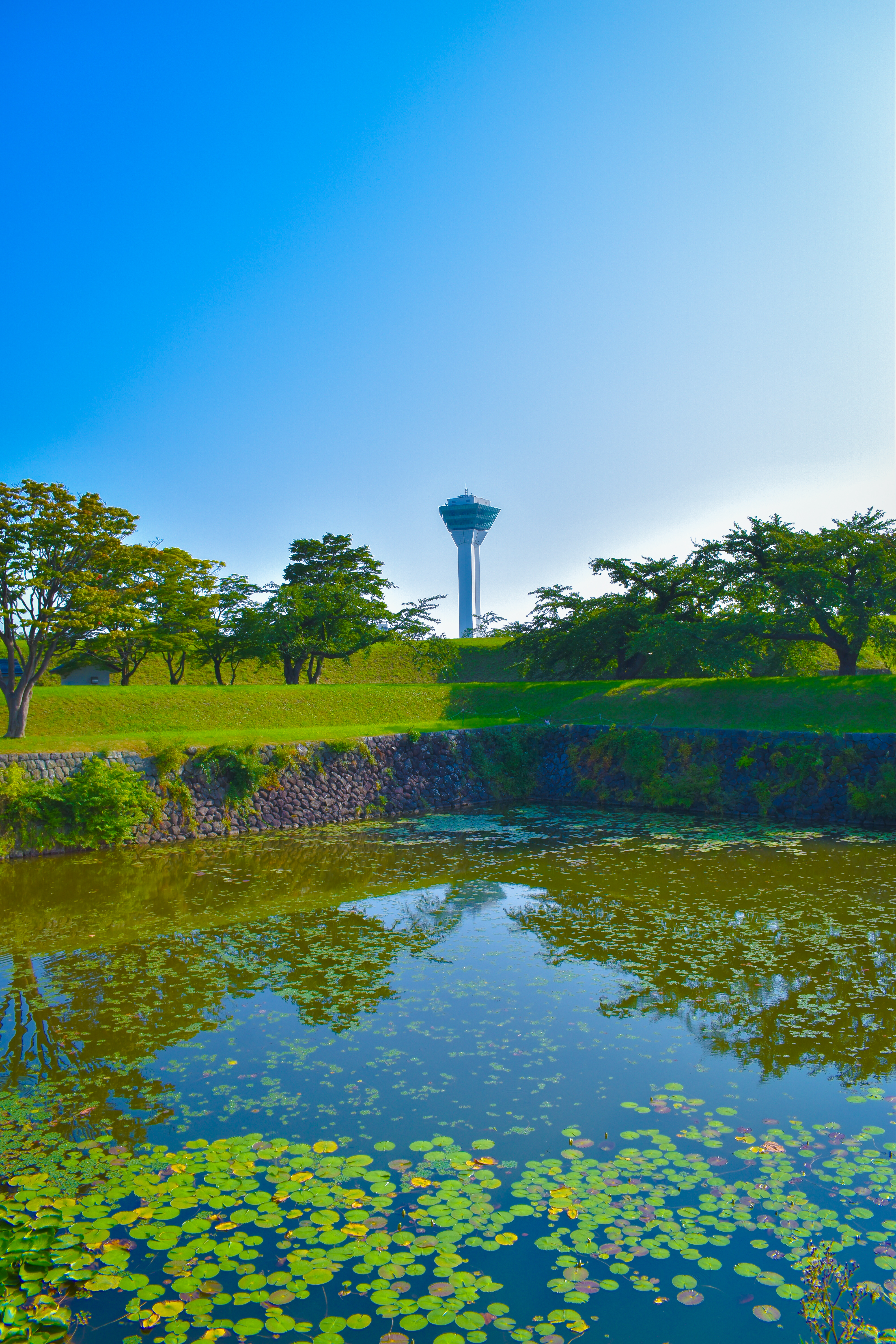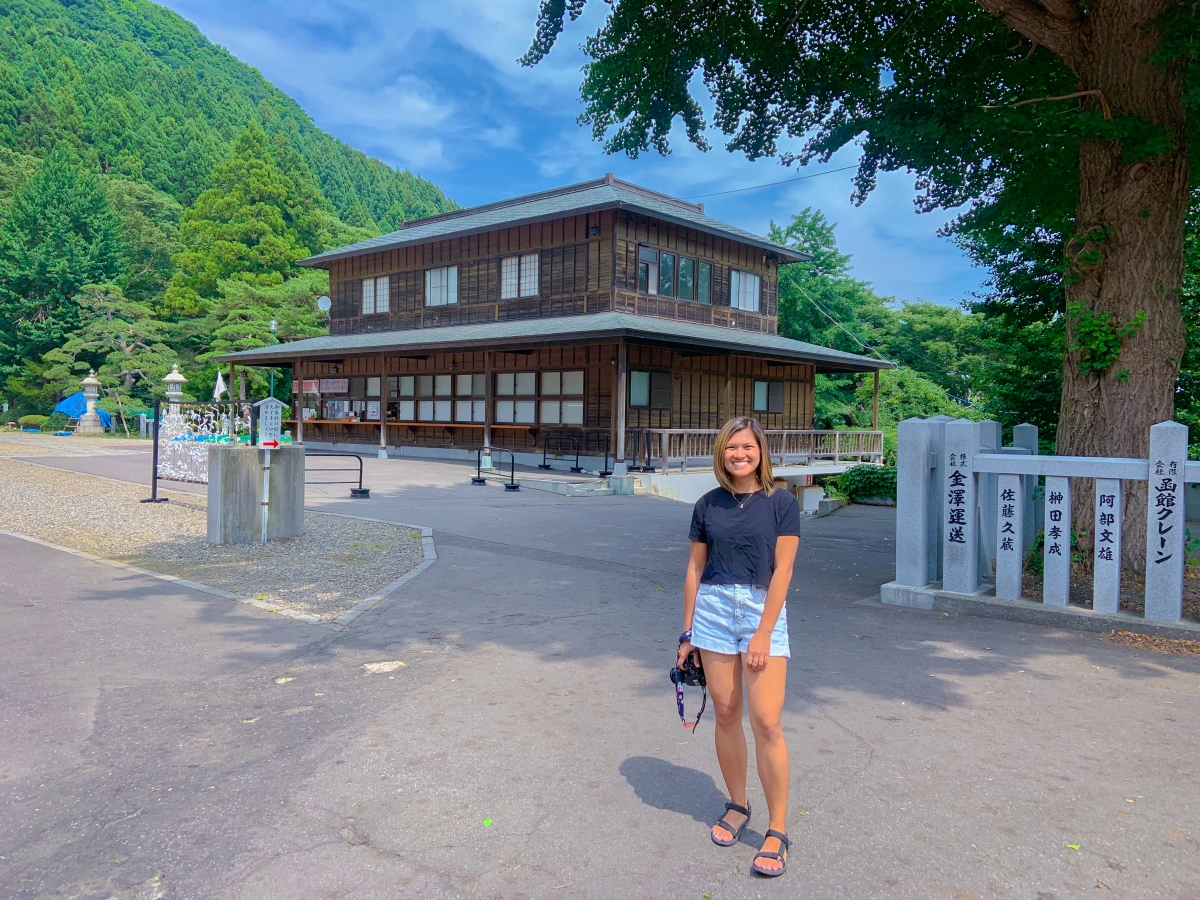A city filled with culture, local identity, and picturesque views. Hakodate lies in the southernmost part of Hokkaido. It is Hokkaido’s third largest city and a must to visit. Unlike other places I’ve visited, Hakodate was spontaneous. I booked a hotel, packed my backpack, got in the express train from Sapporo Station, and stayed there for four days. I knew nothing about the city except for the star-shaped park a friend told me about. The places you are about to see are what I saw as I walked with no direction and places a friend kindly brought me to.
If there are too many words, feel free to skip through them. I don’t mind! But definitely look at the photos!
Because this post is about history and culture, I have included information on some of the sites I visited according to the signs available there. These information are written within a yellow box. Please note that the information were copied verbatim from the signs so that I can share with you its history most accurately.
Fort Goryokaku Park


Goryokaku was unlike any other parks I’ve visited. I visited A LOT of parks in Hokkaido. The architecture was fascinating. What’s even more fascinating is that the structure remained despite how many years. Plus, where else would you be able to find a star-shaped fort turned into park?
Goryokaku History
Fort Goryokaku was built to guard Hakodate Magistrate’s Office at the end of Edo period when Hakodate port was opened to international trade. Takeda Ayasuburo, a scholar or Dutch studies and lecturer of School of Various Arts subordinated to the magistrate’s office, modeled this fort after medieval European fortified cities. With its five bastions pentagonally located, the fort came to be known as Goryokaku. Inside Goryokaku was built the magistrate’s office in the traditional Japanese style as well as 20 other buildings and structures appertaining to it.
The construction started in 1857 and was completed in 1864, when the magistrate’s function was transferred here to serve as the administrative center of Ezo region. After the Meiji Restoration, it continued to be used as an administrative office by the new Meiji government.
In 1868, Goryokaku was occupied by the forces of soldiers headed by Enomoto Takeaki who were loyal to the old shogunate regime. As a result, the fort became the stage of the Battle of Hakodate that ended in May of the following year.
After the battle, however, most buildings inside the fort were dismantled by the Development Commission in 1871. It has been open to public as a recreation area since Taisho period.
Its earthworks being intact, Goryokaku is important for the study of old Japanese fort structure. It is also of high historical value as an example of early adoption of Western technologies and, therefore, Goryokaku was designated as a Special National Historic Site, the only one in Hokkaido.
Former Magistrate’s Office
Inside Fort Goryokaku is the Former Magistrate’s Office. It is possible to go inside, but with an admission fee. Due to time constraints, I opted out of going in. It might have been a great idea to see what it looks like inside.



Also, I spent some time walking around the park. I would highly recommend you take your time.



Goryokaku Tower
If you would like to see Goryokaku Park above, the perfect place to do it is at Goryokaku Tower. It has an observation deck that provides not only the view of Goryokaku Park, but also of Hakodate city. There you can learn about Goryokaku and Hakodate’s history.

Inside you will also find a souvenir shop and various restaurants. There is an Atrium – a glass-walled plaza to relax and eat. My favorite part was of course: Milkissimo (gelato)!
From the observatory, you can witness the city from bird’s eye view.
Hakodate City
Hakodate Minato Matsuri
Unexpectedly, I arrived during the Hakodate Minato Matsuri (Hakodate Port Festival). I arrived two days after their opening day, but was fortunate to have taken part in watching their parade. This festival is the largest summer event in Hakodate and is often held on the first week of August.




Motomachi

Here you will find the churches in Motomachi: Roman Catholic Church, Episcopal Church, Russian Orthodox Church, and the Former Consulate Building. I put some workout in walking to these streets as many of the streets in Motomachi go on a steep slope.
Kanemori Red-Brick Warehouse
These red-brick warehouses were used for trading in the old days. It is directly across the bay. These buildings have been preserved and are now used for shops, entertainment, and restaurants. I was most fascinated to see Starbucks here (they had outdoor seating that overlooks the bay & it was so pretty!). It is possible to get here by local transportation.
Hakodate Hachimangu Shrine
The shrine was surrounded by such luscious green trees and woooow… the atmosphere was very peaceful I almost did not want to speak just to keep the silence. I did not know about this place until my wonderful friend brought me there.
Yamanoue Daijingu Shrine
Take the extra few steps. Unfortunately, this was also one of the sites I went to with my friend so I’m not sure if it it is possible to get here by train or street car.

A closer look of the sign from the photo on the right:
According to the shrine record, the origin of Yamanoue Daijingu (the Great Shrine of Yamanoue) is in the conception of the Holy Spirit of Ise Jingu Shrine by a trainee monk named Fujibo. Fujibo came to Hakodate about 600 years ago during the Quantizing years (at the beginning of the Muromachi Era) and set up a retreat on top of Shinmeisan Mountain in Kameda-Akaigawa Village.
Later the shrine was transferred to Shirisawabe Village (now Sumiyoshi-cho), and renamed Hakodate Shinmeigu Shrine. In 1682, the shrine was transferred again to the present location near the Yayoi Division of the Nishi Fire Deparment. The shrine was then renamed Yamanoue Daijingu from the town’s name Yamanoue and in 1876 it was officially designated as the town shrine.
The shrine’s 8th Shinto priest Sawabe Takuma (formerly named Yamamoto Takuma) at the end of Edo Period was originally from Tosa Clan and was related to Sakamoto Ryoma and Takeichi Hanpeita.
The shrine played not a small role in Hakodate history: During the Hakodate War it was used a living quarter of Matsudaira Sadaaki, the head of Kuwana Clan who fought with the Shogunate Army headed by Enomoto Takeaki.
My favorite part of this was the view on the way back down. I’ve heard before that it’s important not to look back if you want to continue moving forward… in this case, it was worth looking back… I mean, just look at that view!
Trappistine Convent
With my catholic faith, it was a great opportunity for me to be there. My friend took me there. During my month-long trip, I wanted to visit a church at lease once a week and I was not sure if Hakodate had any catholic churches so it felt like an alternative.
The Old Russian Consulate

The following information was pulled from the sign (see sign in the picture behind me). I want to share with you the story behind this old Russian Consulate.

Hakodate’s first Russian Consul Goshkevich took up his post in September 1858 as a result of the Japan and Russia Peace and Amity Treaty which was concluded in December 1854. The original Russian Consulate was established on the site of the current Russian Orthodox Church in Motomachi in 1860; however it was destroyed by a fire which stared in the adjacent English Consulate.
Work on the new Consulate commenced in 1903 at the present location but it wasn’t completed until 1906, due to the Russo-Japanese War. However, it was soon destroyed by the big fire of August 1907. Construction of the existing building was completed at the end of the flower year.
After the Russian Revolution, it was used as the Soviet Consulate from 1925 until 1944, when Consul Zavaliev repatriated on September 30. In 1964, Hakodate City bought the building from the Ministry of Foreign Affairs. It served as a youth lodging and training centre, the Southern Hokkaido Youth House, until July 1996 and is currently not in use.
This building was designed by German architect Richard Seel. The two-storied main building is made of brick and the cusped gables used at the entrance gave it a Japanese Style
The end…
I hope you enjoyed my post. Thank you for making it this far. I appreciate you and the time you have given me. Have a wonderful day!
P.S. I took way too many pictures there and would love to share some of my favorites with you all. Here’s a slideshow of the rest of the photos I’ve chosen, but did not upload above. Enjoy and have a wonderful day!



















































